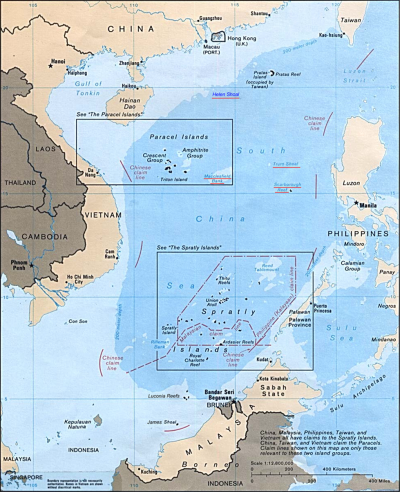Experts Warn of Military Conflicts in South China Sea: “China Will very likely Strike back if U.S. comes within 12 Miles of the Islands”
Exchange of fire possible due to high flight speed

By Chen Heying
Experts on Sunday warned of a potential military conflict over heightened US surveillance in the South China Sea and cautioned that both sides should try their best to avoid miscalculation in the world’s most important bilateral relations.
Analysts believe that recent US military activity is another example of how the US is struggling to maintain the status quo while coping with the rise of China as a global power. They urge the US to face up to the reality that China is becoming a maritime power and that China’s determination to protect its sovereignty should not be underestimated.
“The South China Sea issue makes up a small portion of Sino-US ties,” wrote Cen Shaoyu, an international relations commentator. “Leaders from both countries should understand that the future of China and the US, as well as the future of Asia, are far beyond just that.”
China electronically jammed Global Hawk long-range surveillance drones spying on China’s Nansha Islands, a possible attempt to capture a Global Hawk by causing one to crash in shallow waters, or to snatch one in flight using a manned aircraft, The Washington Free Beacon reported on Friday.
Disclosure of the jamming came as a US P-8A anti-submarine and maritime surveillance aircraft flew over waters off China’s Nansha Islands for reconnaissance activities on Wednesday.
It is the US that travelled thousands of miles to China’s doorstep to force China to safeguard national territorial sovereignty and maritime interests, Peng Guangqian, a specialist in military strategy at the PLA Academy of Military Science, told the Global Times.
“China’s responses were justified acts of self-defense when the US flights approached China’s territory and were in accordance with international practice,” Tao Wenzhao, a research fellow with the Institute of American Studies at the Chinese Academy of Social Sciences, told the Global Times.
China will very likely strike back if the US comes within 12 miles of the islands, Peng said, adding that the US was deliberately provoking China.
“The US provocation has boosted the chance of military confrontation between Beijing and Washington,” Zhu Feng, director of the Collaborative Innovation Center of South China Sea Studies under Nanjing University, told the Global Times.
Once China dispatches aircraft to drive away the US fighters, both sides are likely to exchange fire due to high flight speed, Zhu said.
“The reconnaissance conducted by the US military aircraft poses a potential threat to the security of China’s maritime features, and is highly likely to cause miscalculation, or even untoward maritime and aerial incidents,” Hong Lei, a spokesman for China’s Ministry of Foreign Affairs, told a regular press conference on Friday.
The presence of the US military in the South China Sea also encouraged countries neighboring the waters to increase military build-up, making the region more unstable and deterring peaceful settlement through dialogue, said Jin Canrong, vice director of the School of International Studies at Renmin University of China.
The Pentagon’s moves came after US Secretary of State John Kerry finished his two-day visit to China on May 17. Kerry reaffirmed the US government’s stance of not taking sides on the South China Sea issue and said the same stance will apply to other parties involved in the dispute, the Xinhua News Agency reported.
“The conflicting attitudes adopted by the US government and its military demonstrated the disunity within the US,” Jin said.
“Of course the involvement of great powers outside the region complicates the South China Sea situation. However, the involvement of major countries also means more convoluted interests are at stake when it comes to making the decision to enter military conflicts,” said Xue Li, a research fellow with the Chinese Academy of Social Sciences.
Copyright Chen Heying, Global Times 2015

